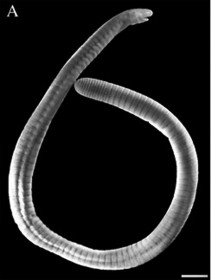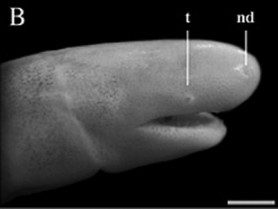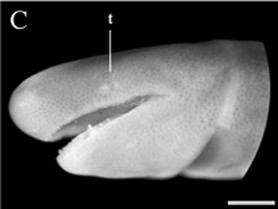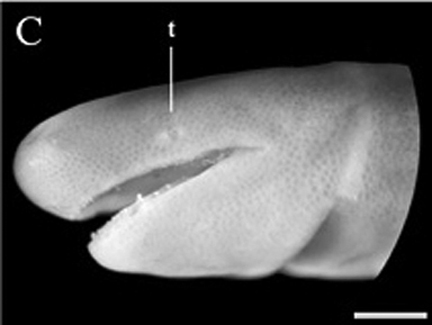Researchers say they have discovered a new amphibian species here that can survive on land with no nostrils, lungs or legs.
 According to a National Geographic news article, the creature is part of a wormlike group of amphibians known as caecilians.
According to a National Geographic news article, the creature is part of a wormlike group of amphibians known as caecilians.
Only one other caecilian species is known to live without lungs, it said.
It was noted that generally, the presence of lungs is among the key characteristics that make amphibians different from fish, and until recently, scientists thought that salamanders were the only amphibians without lungs.
In 1999 researchers found the first known lungless caecilian and in 2008 another team reported a tiny, land-living, lungless frog.
The new species is even more of a surprise because the animal-named Caecilita iworkramae is strikingly different from the other known lung-less caecilian, according to the study authors, Marvalee Wake, an evolutionary biologist at USC Berkeley and Maureen Donnelly of Florida Inter-national University.
Caecilita lives on land and is 4.4 inches (11 centimetres) long, while its lungless relative is fully aquatic and reaches 27.5 inches (70 centimetres) in length, according to the release.

 Wake and Donnelly also noted that together with the small, lung-less frog, the diminutive new caecilian suggests that lunglessness is most likely to appear in land-dwelling amphibians that are relatively small.
Wake and Donnelly also noted that together with the small, lung-less frog, the diminutive new caecilian suggests that lunglessness is most likely to appear in land-dwelling amphibians that are relatively small.
But why are the animals lungless? “I speculate that losing lungs might decrease body diameter and help [Caecilita] to burrow better,” Wake said, “But quite frankly, they may [have lost] them simply because they no longer need them.”
However, she admitted that her explanation did not resolve how the aquatic caecilian or the frog might have lost their lungs.
She also said people should expect to see a lot more “lunglessness” as they looked closer at amphibians, given the diversity among lungless creatures.

